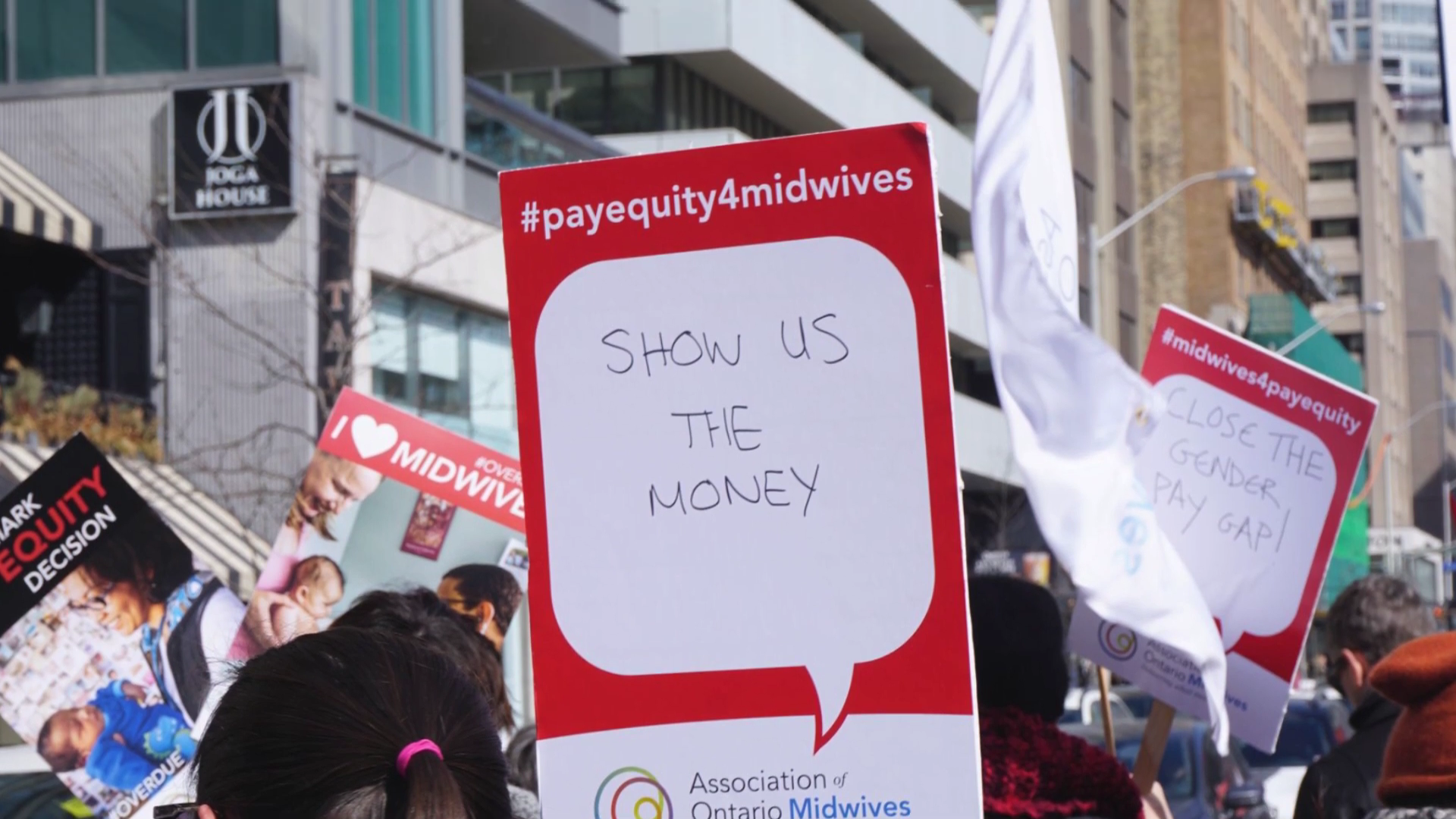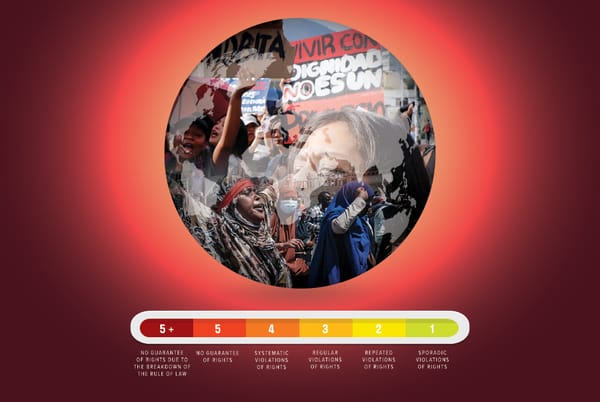There’s more than enough bad news to go around on the labour front during most weeks. Sometimes it’s nice to take a look back at a victory. One such case that I’ve been keeping an eye on for a couple of years now and that recently culminated in a resounding win involves midwives in Ontario and their fight against pay discrimination.
Midwifery is a profession in Ontario composed almost entirely of women. Those working as midwives use similar skills and perform comparable health-related tasks as community health physicians. Yet midwives have faced pay discrimination since at least 2005, or arguably since the government recognized them as a regulated health profession in 1994. It was clear to anyone paying attention that this discrimination was gender-based.
As part of a “joint working group,” representatives from the profession and government initially set salaries for midwives to align with senior nurses and family physicians. The Ontario Pay Equity Act also compelled the government to assess midwives’ jobs against comparable male-dominated professions. Despite these initial negotiations and salary-setting procedures, over the ensuing 25 or so years the pay gap between midwives and community-based family physicians widened considerably. As of 2021, midwives earned between $80,000 and $120,000 annually, which, although well above the median income for Canadian workers, is roughly $100,000 less than a typical family physician.
The Mike Harris Progressive Conservative government froze the salaries of midwives in the mid-1990s, a policy that continued into the Dalton McGuinty Liberal government. Although physicians and other healthcare workers faced roving wage repression during these years, the consistent freeze on midwives exacerbated the gender pay gap they faced. In the mid-2000s, physicians managed to secure relatively generous salary increases. Midwives weren’t so fortunate. Eventually, the government dropped physicians as a comparator profession and allowed midwife salaries to diverge even further.
It was following this latter move, in 2013, that the Association of Ontario Midwives (AOM), the professional organization representing midwives in negotiations with the government, filed an application at the Human Rights Tribunal of Ontario (HRTO) alleging the Ministry of Health had engaged in 20 years of gender-based pay discrimination. Although in 2018 the HRTO dismissed the AOM’s allegation of pay discrimination between 1994 and 2005, it did find “sufficient evidence” that midwives had experienced “adverse effects” from 2005 onward because of gender-based discrimination against their profession.
In February 2020, the HRTO issued its remedy: retroactive compensation to achieve gender parity, plus $7,500 to each eligible midwife for “injury to dignity.” As part of this back pay, the government was to implement the recommendations of the 2010 Courtyard report which had called for increasing midwife pay by 20 per cent, a recommendation that was dismissed when that government-commissioned report was originally authored.
The Human Rights Tribunal’s initial finding was itself a decisive victory for the nearly 1,000 practicing midwives in Ontario who provided care for more than 25,000 people in 2020. In particular, the Tribunal noted that the pay discrimination to which midwives had been subject was based on misconceptions and stereotypes about their work. As midwives had been arguing for years, the pay gap was driving people out of the profession. The AOM called on Doug Ford’s government to accept the ruling, raise wages and close the gender pay gap. As lawyers reflecting on the decision highlighted, the midwife ruling also set a strong obligation for the government (and other employers) to take greater care in ensuring pay practices weren’t discriminatory.
Of course, the Ontario government appealed the ruling and remedy and requested judicial review. In the summer of 2020, the Ontario Divisional Court dismissed the province’s appeals. As Katie Daubs at the Toronto Star reported, the court was not persuaded by the government’s argument that the tribunal decision was “unreasonable” and further argued that the government “mischaracterized” the history of compensation negotiations between the province and registered midwives.
With 10 days to comply with this June 2020 ruling, Ford’s government again chose to appeal the Divisional Court decision and plead their case before the Ontario Court of Appeal in November 2021.
Apparently, the ‘third time was a charm’ for the midwives. The following June — last summer — the Court of Appeal also upheld the original Human Rights Tribunal ruling, finding against the government. Again, this decision not only corroborated the midwives’ allegations but added weight to the precedent for finding systemic discrimination in compensation. By further clarifying that systemic discrimination doesn’t necessarily have to include intent, the Court’s decision obliges government to proactively prevent pay discrimination on human rights grounds. As Jasmin Tecson, midwife and president of the AOM, commented after the decision: “The courts have spoken loud and clear […] and three times in a row. Midwives call on the Ford government to act without delay to close the gender wage gap for midwives.”
The Ford government seems to have a penchant for losing in court. In September 2021, Mike Crawley at the CBC detailed more than a dozen cases the Ontario PCs had pursued in court and lost, many appealing and challenging progressive decisions of various Ontario tribunals and courts. At that stage, the government was appealing the midwife pay equity decision to the Ontario Court of Appeal — the appeal the government ultimately lost last year. Of course, the Ford government’s public sector wage suppression law, Bill 124, was also found unconstitutional (a decision it’s also challenging). Thankfully, the government has quietly indicated that it won’t exercise its right to further appeal the midwife ruling to the Supreme Court of Canada. A little humility looks good on them for once.
Vindicating the HRTO’s original decision is also important because it’s one of the first times the tribunal rendered a favourable decision based on systemic discrimination against a group of workers. Gender-based pay discrimination continues to be a widespread problem through Ontario and Canada more broadly. Midwives’ victory should inspire other workers — particularly those in often-undervalued care sectors of the economy — to continue the battle against gender-based pay discrimination.
It took far too long to achieve this victory, but it’s worth celebrating and reflecting on now.







